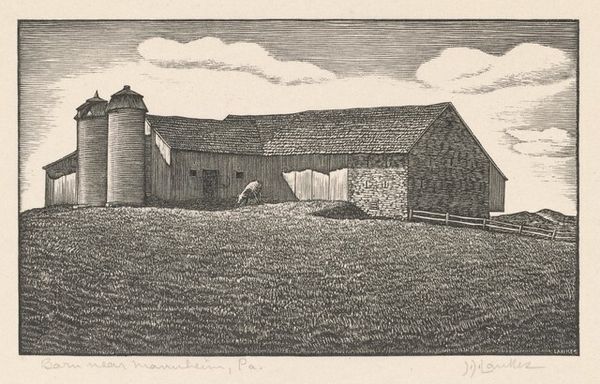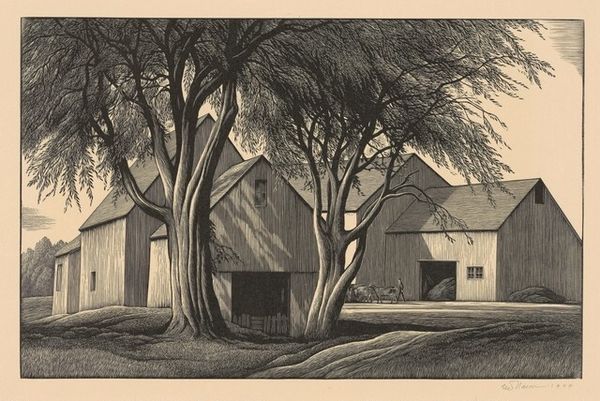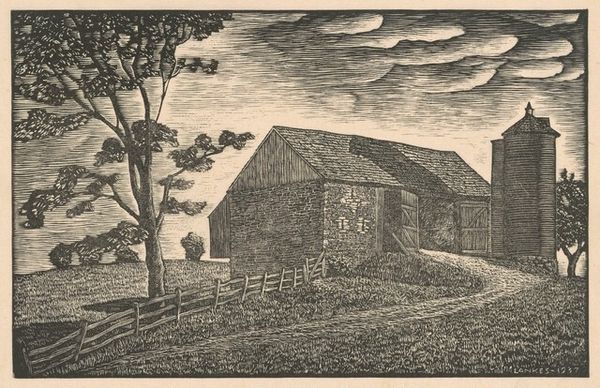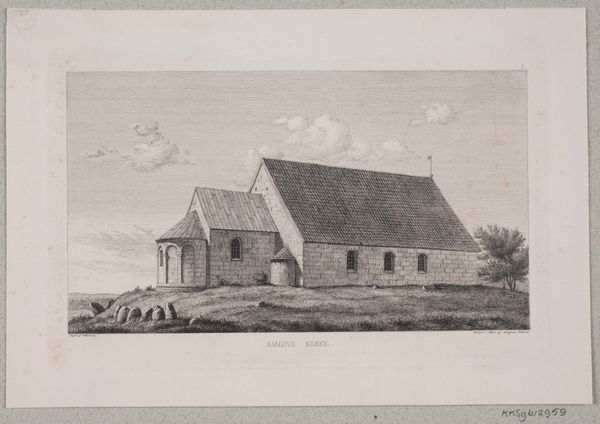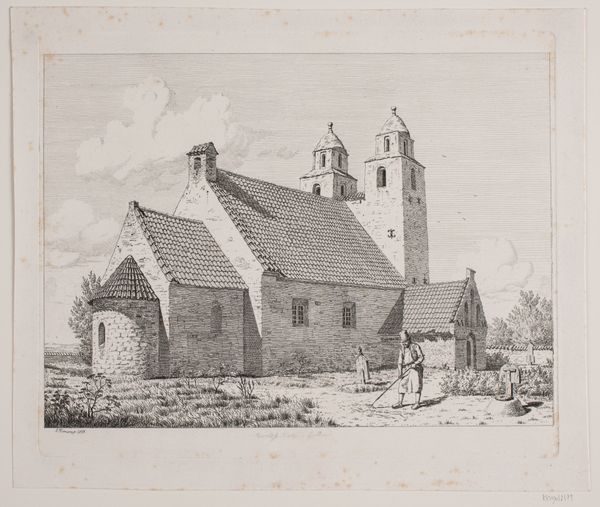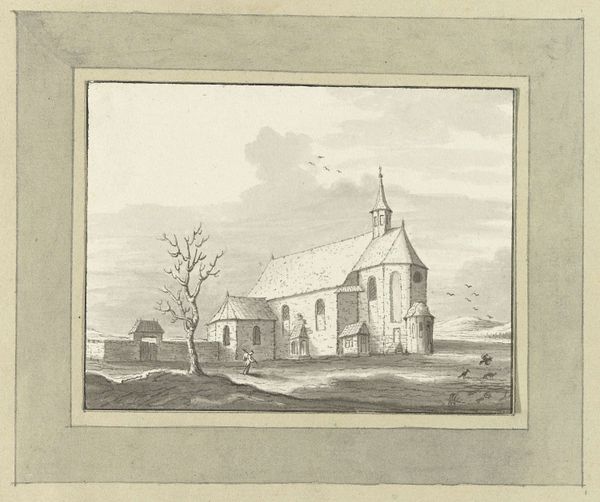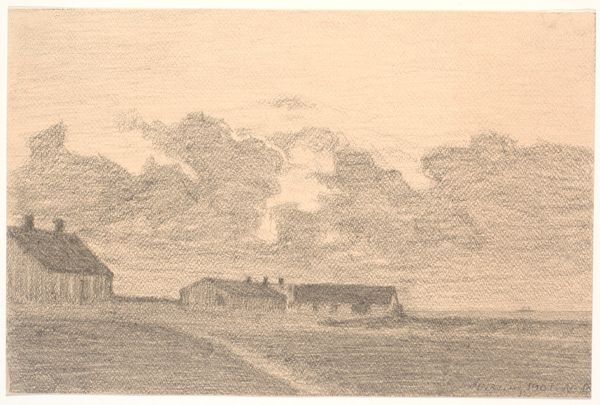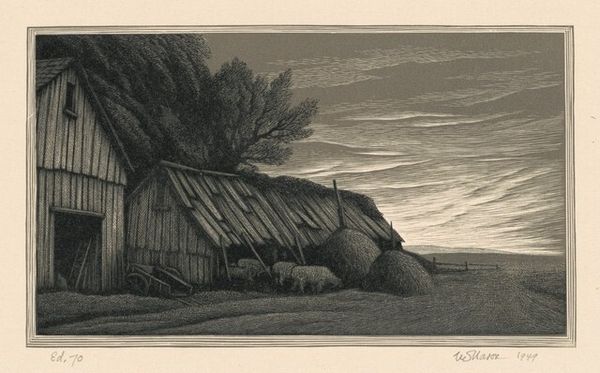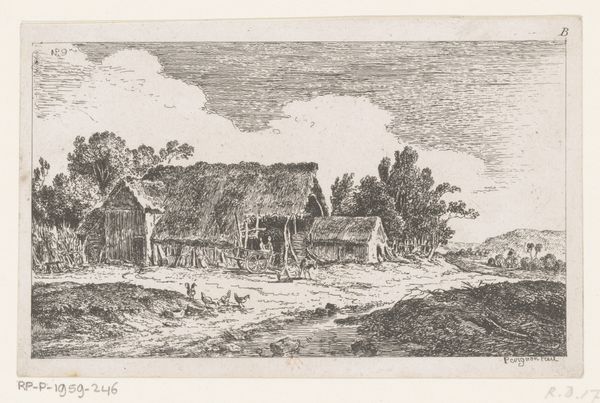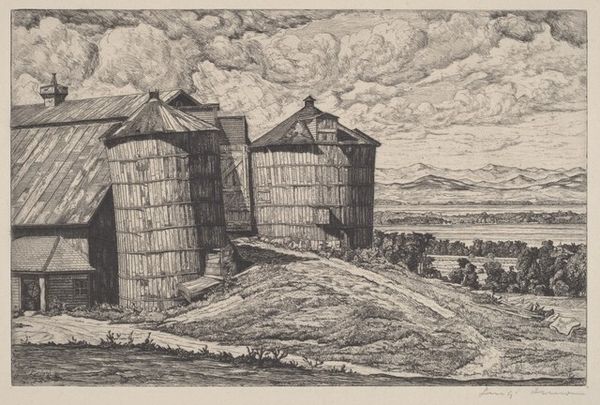
print, woodcut
#
pencil drawn
# print
#
landscape
#
woodcut
#
realism
Dimensions: image: 14.29 × 26.04 cm (5 5/8 × 10 1/4 in.) sheet: 20 × 30.96 cm (7 7/8 × 12 3/16 in.)
Copyright: National Gallery of Art: CC0 1.0
Curator: Standing before us is Thomas W. Nason’s woodcut from 1947, titled "The Gambrel-Roofed Barn." Editor: There's a quiet strength in this image, isn't there? It feels like a memory, rendered in shades of twilight. The texture of the woodcut itself seems to echo the weathered wood of the barn. Curator: Absolutely. Consider the labor involved—each line meticulously carved into the woodblock. This piece embodies a dialogue between rural America and the burgeoning industrial age, capturing agrarian structures just as mechanized agriculture reshaped the landscape and rural labor. Nason wasn't just depicting a barn, but also reflecting on shifting economic foundations and the changing material culture of agriculture. Editor: And the light! It almost hurts my heart a bit. The way it caresses the silo and casts long shadows… I find myself wondering what stories that old barn could tell. It feels so permanent, yet so vulnerable at the same time. It reminds me of visiting my grandfather’s farm—that same stillness and heavy weight of history. It seems to be from a different time than this time we now know, somehow lost to time. Curator: Notice, too, how the technique reinforces the subject matter. The medium of woodcut itself has its roots in craft traditions closely aligned with rural communities. Unlike etching or other printing processes, woodcut requires a direct, physical engagement with the material, further underscoring Nason's investment in celebrating agricultural craftsmanship. Editor: You know, it’s funny… even in monochrome, I can almost smell the hay and the earth. I think there is also an element of American optimism embedded in Nason's landscapes; perhaps they served as a balm, soothing anxieties surrounding global unrest and war. Curator: Yes, I see that. It also calls into question, from my viewpoint, whether this form of nostalgic idealism, a return to traditional aesthetics rooted in depictions of land, is something we can—or even should—hold on to given what we now know about the historical complexities of labor, landscape and environment in America. Editor: Well, despite all that academic skepticism, I think its charm is also how well it holds onto me, refusing to release the gaze; a haunting vision from the past…
Comments
No comments
Be the first to comment and join the conversation on the ultimate creative platform.
